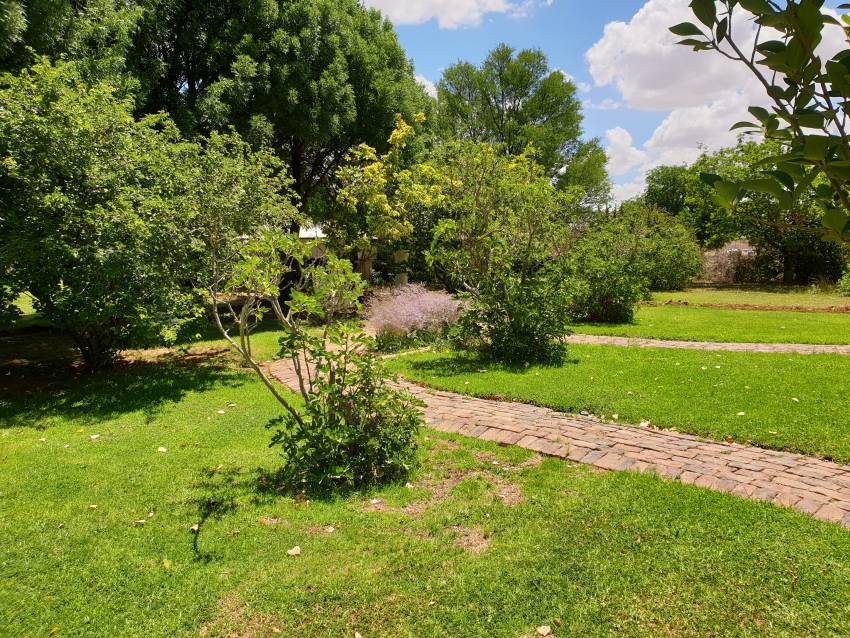St Peter's Prep Schools: A Story about the Fig Trees
One of the aspects that defines the St Peter’s curriculum is the intentional teaching of thinking, along with the importance of life values. In teaching thinking, we seek to train children to adopt a broad approach to problem-solving and to be aware of the dangers of thinking driven solely by emotions, negativity, positivity or any one of the single impetuses that can confine our thinking to a narrow outcome.
The tale below is an illustration of such thinking. The story does not have a happy ending and Darrel and Rob would castigate me for sharing it at this time but, for me, it is such a vivid example.
During the Christmas holidays, before the Covid-19 Lockdown, I travelled to a farm in the Karoo in search of the rare, endemic, Black-footed Cat. This is one of the rarest feline predators in the world with the highest hunting success rate. It’s about the size of a domestic cat and is found only in the arid Karoo and fringes of the Kalahari Desert.

My host was a farmer who, like so many of his ilk, was passionate about the Karoo and had great compassion for its original human inhabitants. He relished my interest and spent much time regaling me with stories. One such follows.
The farmer was heavily involved in the community and was a member of the local church council. A couple of years previously, a new pastor had arrived.
The church was situated near the centre of the old part of town on spacious grounds, to allow the ox wagons of the past to outspan. It was approached by a road, unsurprisingly named Church Street, also sufficiently wide to accommodate ox wagons and their spans of oxen. The parsonage lay along this road. A low, white plastered wall, just above knee-height, separated the parsonage property from the pavement.
In the parsonage garden, just inside the low wall, stood a line of seven old fig trees.

In its design the town was typical of colonial planning with a White area close to the church and people of colour housed in a reserved settlement on the fringe. The school, however, was situated near the White area.
Over a long period, possibly as much as a century, it became the custom for children returning home from school to hop over the wall of the parsonage and help themselves to a fig or two from the seven trees which bore generously. For many this was a treat, but often for the children from the ‘township’ the fruit served to fill empty tummies.
It wasn’t long after the new pastor arrived that he told the church council that he was uncomfortable with the practice. He did not care for children on his property helping themselves to the fruit. The church council explained that it was a longstanding custom and that the children had never abused the privilege or entered further into the garden. The pastor was not persuaded.
Over the next couple of parish council meetings, the pastor requested that the wall be raised to prevent anyone from entering the parsonage grounds. The church council protested and pleaded but to no avail. The wall was to be built.
My host had been one of the most outspoken in attempting to persuade the parson and was devastated at the decision. He felt he had to do something. With only a week to go before work on the wall commenced, he slipped into the parsonage one moonless night with a work party, dug out the ancient trees and relocated them in his farm-house garden.
I cannot testify to the veracity of this tale, but I did see the line of trees in the garden. The thick trunks were reduced to stumps twenty-odd centimetres high, sprouting new, young branches.
When the tale was over, I did not know what to say to the farmer. I felt that there was an expectation that I would acknowledge that he had saved the iconic trees. But my mind was full of questions. He was a particularly intelligent and well-read man and would recognise insincerity in an instant.
Was he satisfied with saving the trees, but removing their benefit from the town’s children? What was the point of saving the trees if they were removed to a location where the townsfolk could no longer see them? What of the children: how would some of them fare without the fruit on which some depended? And what would they think of the adults who were leaders in the church? Were the trees removed anonymously to teach the pastor a lesson? How would the parents of the children feel? And what of the pastor? Had enough been done to explain the consequences of his dictate? I don’t know why the wall was not built on the inside of the trees to allow the children to continue to enjoy the fruit. I was too shocked by the story to ask the farmer.